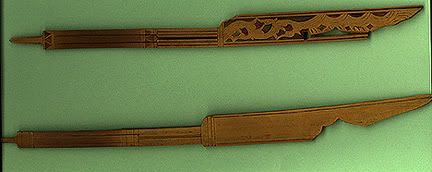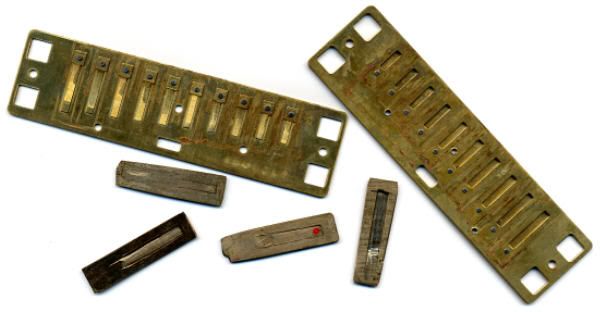Here's a term that might sound new to a lot of you. The free reed instrument. Now I have already talked about the reed used in the instruments called woodwinds (namely clarinets and saxophones) which is also called a 'beating reed', but these are a little different.
Free reeds are reeds that are surrounded by a plate that is just barely wider than themselves. When pressure or suction is applied to the reed it is then able to move up and down freely through the slot in the plate that surrounds it. In this way it creates vibration and thus sound. This is different from the other reeds I talked about because in those reeds, the air that is blown through them by the musician causes the read to 'beat' against the mouthpiece as it vibrates, causing sound that way.
Types of Free Reeds
There are two types of free reeds. The first type is the older kind and is called: idioglottal. This means that the reed and the 'casing' or plate are one piece. The surrounding plate will be cut out underneath the tongue of the reed so that it still can flex freely up and down but the reed is anchored to the plate simply because it was never cut away. The tongue of the reed will either be triangular or rectangular and often lies flush with the plate. This type can be played by drawing air or blowing air. To get different pitches from the reed the size must be changed and oftentimes the material of the actual reed. Lastly, this reed must be attached to some form of resonator to create audible sound.These reeds were used mostly in older Asian instruments like this Kobing from the Philippines:

The newer version of the free reed is used mostly in western culture and is heteroglottal. This basically means that the plate and the reed are two separate pieces. The tongue of the reed still hangs free over the slot in the plate but where it would be attached as one piece to the plate in the other type it is instead a completely separate piece that is attached via screw or other means. This type can hold many sized reeds with one plate or have one plate per reed-note. Instruments you might recognize that use this system include the harmonica or the accordion. You can see on the inside of the harmonica how these metal reeds are placed so that when the two pieces are put together they still have a large enough slot in which they can move up and down as air is drawn across them (notice also how they are fastened down instead of part of the reed-plate).

Very Punny
Some soloists are so bad they should sing tenor twelve miles away.
No comments:
Post a Comment